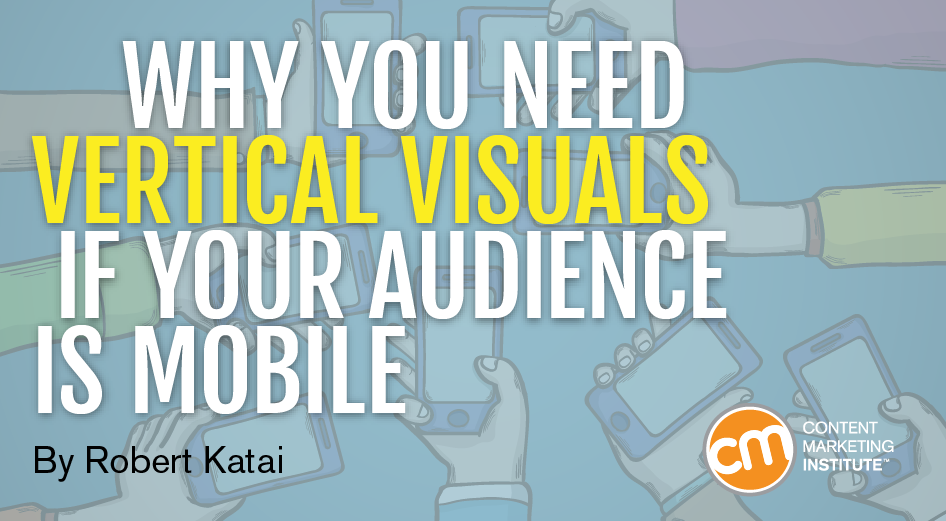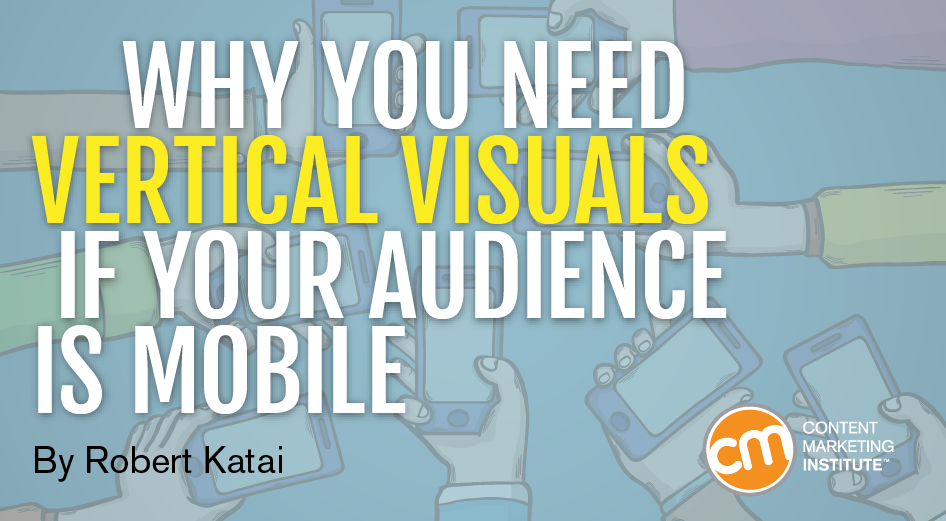Originally, they were not created for mobile users, but they are the perfect format for vertical content. To successfully incorporate this type of vertical content, you need to consider a few things: Make sure your infographics are branded. Make sure all the data in your infographics is useful to your audience. Make it easy for people to share your content. Stories Another great vertical content choice is to publish stories on Snapchat and Instagram. To use stories successfully, remember to: Use stickers. Stickers allow you to customize one or more slides with information that your audience may find valuable or entertaining. A lot of brands are using Instagram Stories. What other types of vertical content are you using? Stay on top of the trending topics in content marketing to make your content marketing even more successful.

A decade ago, nobody mentioned vertical content. Then again, back then smartphones were something new.
Today, smartphones are ubiquitous and vertical content is a must-have. The two are inseparable. One cannot mention vertical content without using the term “mobile” in the same sentence.
Why vertical
Before getting too far into the topic, vertical content is content that can be easily read on a rectangular, elongated device such as a smartphone or tablet.
According to Mary Meeker’s global trend study published by KPCB, Americans spend 29% of their free time watching video content vertically.
Most people find it natural to hold their phones in a vertical position. While they sometimes need to turn them sideways to watch a feature movie or play games, upright is the default.
As a consequence, you need to think mobile to be a successful marketer and adapt to the behavior of at least half of your potential audience.

How vertical content began
Remember the days when Pinterest launched? March 2010 were the first days of vertical content as a concept.
If we look to today’s online context, vertical content really went mainstream with Snapchat Stories, a feature later copied by Instagram. Stories allowed users to consume mobile social content in a natural way.
Snapchat also introduced the first vertical advertising concept, “3V – Vertical Video Views,” a concept later embraced by Instagram for its advertising services and, a few months ago, its IGTV platform.
How vertical content differs
Observe the following image for a a few seconds:

You may have noticed two kinds of content are featured. The one on the left shows how vertical content looks on a mobile device. The screen on the right shows how traditional content looks on a mobile device.
As you can see, the right screen shares the screen with another user’s post. As a consequence, the primary image may not receive the viewer’s full attention like the image on the left screen could.
Now, how do you incorporate vertical content into your strategy to ensure that you create a better experience for your audience and your brand?
While there is no single answer, let’s go through three of the most valuable types that can help you achieve your goals.
1. Infographics
Infographics may be considered the oldest type of vertical visual content. Originally, they were not created for mobile users, but they are the perfect format for vertical content.
To successfully incorporate this type of vertical content, you need to consider a few things:
- Make sure your infographics are branded. You want your audience to associate…

COMMENTS